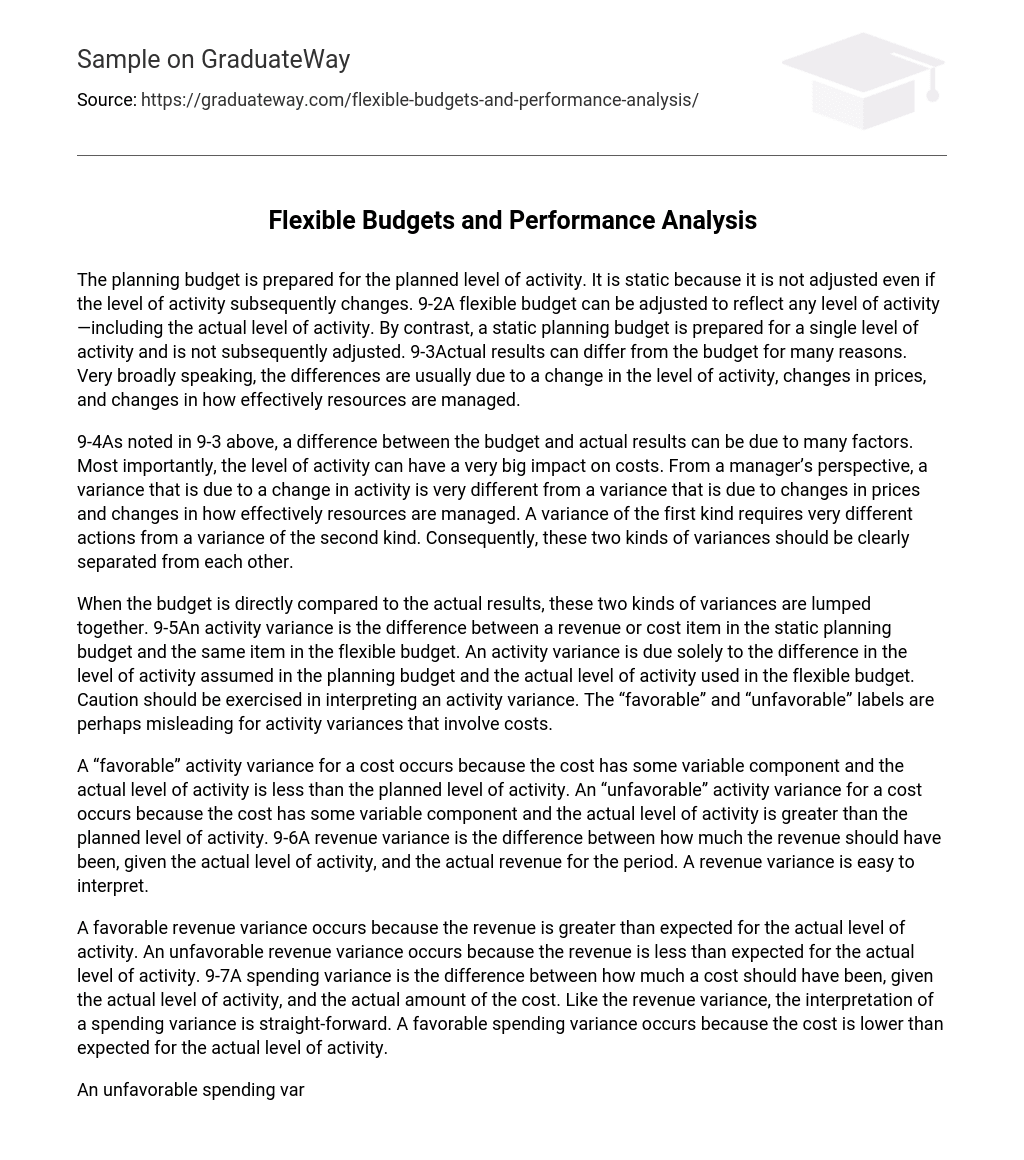The planning budget is prepared for the planned level of activity. It is static because it is not adjusted even if the level of activity subsequently changes. 9-2A flexible budget can be adjusted to reflect any level of activity—including the actual level of activity. By contrast, a static planning budget is prepared for a single level of activity and is not subsequently adjusted. 9-3Actual results can differ from the budget for many reasons. Very broadly speaking, the differences are usually due to a change in the level of activity, changes in prices, and changes in how effectively resources are managed.
9-4As noted in 9-3 above, a difference between the budget and actual results can be due to many factors. Most importantly, the level of activity can have a very big impact on costs. From a manager’s perspective, a variance that is due to a change in activity is very different from a variance that is due to changes in prices and changes in how effectively resources are managed. A variance of the first kind requires very different actions from a variance of the second kind. Consequently, these two kinds of variances should be clearly separated from each other.
When the budget is directly compared to the actual results, these two kinds of variances are lumped together. 9-5An activity variance is the difference between a revenue or cost item in the static planning budget and the same item in the flexible budget. An activity variance is due solely to the difference in the level of activity assumed in the planning budget and the actual level of activity used in the flexible budget. Caution should be exercised in interpreting an activity variance. The “favorable” and “unfavorable” labels are perhaps misleading for activity variances that involve costs.
A “favorable” activity variance for a cost occurs because the cost has some variable component and the actual level of activity is less than the planned level of activity. An “unfavorable” activity variance for a cost occurs because the cost has some variable component and the actual level of activity is greater than the planned level of activity. 9-6A revenue variance is the difference between how much the revenue should have been, given the actual level of activity, and the actual revenue for the period. A revenue variance is easy to interpret.
A favorable revenue variance occurs because the revenue is greater than expected for the actual level of activity. An unfavorable revenue variance occurs because the revenue is less than expected for the actual level of activity. 9-7A spending variance is the difference between how much a cost should have been, given the actual level of activity, and the actual amount of the cost. Like the revenue variance, the interpretation of a spending variance is straight-forward. A favorable spending variance occurs because the cost is lower than expected for the actual level of activity.
An unfavorable spending variance occurs because the cost is higher than expected for the actual level of activity. 9-8In a flexible budget performance report, the static planning budget is not directly compared to actual results. The flexible budget is interposed between the static planning budget and actual results. The differences between the static planning budget and the flexible budget are activity variances. The differences between the flexible budget and the actual results are the revenue and spending variances. The flexible budget performance report cleanly separates the





